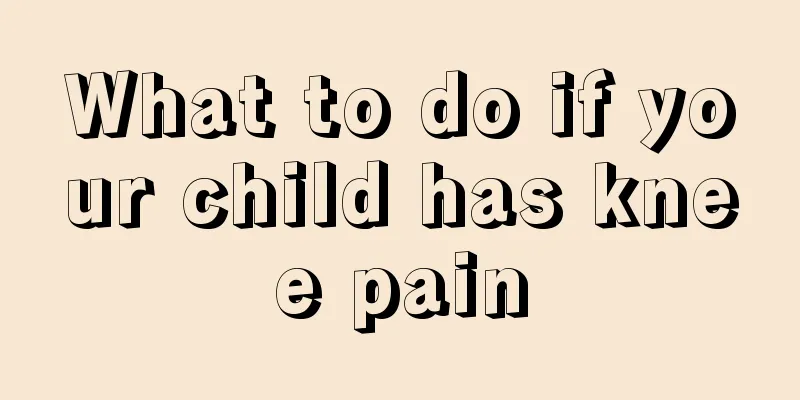What to do if your child has knee pain

|
What should I do if my child has knee pain? What is the cause? My child has been complaining about knee pain these past few days. I didn’t take it seriously at first, but I started to worry when he kept saying so for several days in a row. My child usually feels some pain when walking, and the pain is more severe when going up and down stairs. The pain will slowly ease when the legs are still. I searched the Internet for a long time before I found out what caused my child's knee pain. Here is what I will tell you now. You can go to the hospital for a check-up, as an in-person physical examination will be more accurate. Generally, you don't need to take medicine, but you can use external medicine. The doctor may issue a certificate of exemption depending on the specific circumstances. It is considered to be growing pains. Typical growing pains occur after a day of intense activity. The pain often occurs before going to bed at night. The site of occurrence may be the soft tissue or tendon near the knee joint, followed by the thigh and calf, sometimes in the tibia, and occasionally in the upper limbs. Each pain occurs at irregular intervals, lasting from a few minutes to half an hour, without wandering, and the limb movement is not restricted. It can be relieved by itself. Local massage and hot compress can often relieve the pain. Also, playing in cold water or washing your feet with cold water when the weather is hot can cause excessive fatigue and cause knee pain. Considering that this is caused by excessive daytime activity, it is recommended to pay attention to a good and reasonable diet, increase comprehensive nutrition, and eat more milk, lean meat, peanuts, eggs, etc., which are all supplementary. Osteochondritis of the tibial tubercle. It is a common disease, usually in boys aged 11-15 years, and can occur on one side or both sides. The main symptom is localized pain in the front of the knee. The patient experienced obvious pain when going up and down stairs, running, or jumping. When kneeling, the local patellar ligament is stretched and tightened, which directly compresses and aggravates the pain. The pain may ease or disappear after rest. X-ray shows soft tissue swelling and hypertrophy at the attachment of the patellar ligament in the anterior and superior part of the tibial tubercle, and calcification or ossification "fragments" can sometimes be seen. This disease is a self-healing disease. The course of the disease is about 2 to 3 years. The treatment method should limit physical activities and prohibit running and jumping activities for 3 to 6 months, which can relieve symptoms. The above is what I know about what to do and what causes knee pain in children. I just found out that children of this age usually have this phenomenon. Parents don’t need to worry too much. You will feel relieved after checking in the hospital. It is best not to give children various medicines for no reason. The pain will disappear on its own with time. You can usually give your child some calcium-supplementing foods. Children need a lot of calcium to grow. |
<<: Methods of memory training for junior high school students
>>: How to correct a hunchbacked child
Recommend
Is herpes contagious in children?
Children's bodies are relatively weak and the...
Is it appropriate to bathe a child with a fever?
Every October, you can see long queues in the ped...
How to deal with children's nasal mucus
Children have more nasal secretions and their nas...
What causes stomachache in children?
What is more important than children’s academic p...
Symptoms of fistula
The so-called rickets is mostly caused by calcium...
What to do if your child has a fever
What parents fear most is not their children bein...
The child's eyes are covered with eye mucus
In life, many children suffer from conjunctivitis...
What to do if your child is more immature than his peers
Children in any family are cared for by their par...
Is moderate anemia serious in children?
Anemia often occurs in some women in life. After ...
What are the dangers of anesthesia for children?
After children are given anesthesia, their brains...
Why do children shake their heads unconsciously?
For young couples, having a child is the most des...
The pros and cons of early love among middle school students
Children in today's society are growing faste...
What are the consequences of meningitis in children?
If a child develops meningitis, it is a serious c...
How long does it take for a child to have their teeth fixed? Let the authoritative experts tell you
Many parents are worried that their children’s te...









